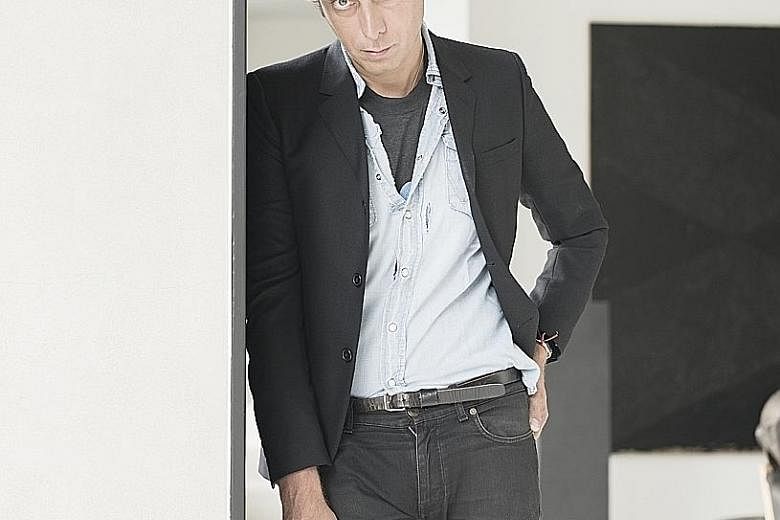NEW YORK • Designer Hedi Slimane, who over four years blazed a best-selling, controversial and much-imitated trail through fashion as the creative director of Saint Laurent before leaving in March last year without explanation or apology, is re-emerging in the public eye, this time as a photographer.
That guise is nothing new for him. Throughout his career - at Saint Laurent and before that, at Dior, where he designed menswear from 2000 to 2007 and elicited similar rapture - photography has been a constant obsession, running parallel to fashion, but never beholden to it.
Since leaving Saint Laurent, Slimane, 48, has devoted himself to it full time, battling rumours that he is seeking backers for his own collection. He never intended to leave fashion, he says now, and did not specifically rule out a return.
It would not, however, be in his own name.
Last week, the first of a series of portfolios he photographed for V Magazine arrived, Hedi Slimane's New York Diary, shot mostly in Brooklyn, in photo studios including his own. He took portraits of New York's esoteric illuminati, both the well known (musician Thurston Moore, painter Francesco Clemente) and the under-appreciated (post-punkers James Chance and Lydia Lunch and up-and-comers such as Long Island-born brother rockers The Lemon Twigs).
For the occasion, Slimane, who generally declines to speak about himself or his work publicly, agreed to answer a few questions by e-mail. Since leaving Saint Laurent last year, you've devoted yourself to photography full time. Is it fair to say that photography interests you more than fashion at the moment? Why is that? I started at 11 with black-and-white photography. It has always been a natural and defining part of my life, a personal, intimate process. I am deeply attached to each of the characters I depict and to my photography archive.
I am equally fond of fashion, however it is a different process, more analytic, drawn by the semiotic of fashion and individuality, the sense of personal style rather than fashion (design) standards.
I guess I grew up in clubs from age 15 (La Piscine, Le Palace, Les Bains in Paris, etc.), and concerts and nightlife defined fashion for me. Your New York Diary for V brings together a great collection of artists - James Chance, Eileen Myles, Kembra Pfahler, many of them lesser known - to the general public. How do you choose your subjects? I came to New York the first time in 1989. Manhattan was like nowhere else: artistically vibrant, unapologetically radical. I loved the spirit of it, the freedom and gritty flamboyance of the streets and clubs of New York, the sense of uniqueness. Emerging musicians and artists, The Lemon Twigs, for instance, do belong to this community, something like an "electric heritage".
You mention James Chance, who is such a talented musician. The consistency and sincerity of his work, unaffected, is extremely comforting to me. This is a million miles away from social media culture. He or other artists in the photographic essay might be unknown to the general public, however, they genuinely embody a sense of New York, a living energy and pulse that seems vulnerable and precious to me, let alone today. This legendary community could, more than ever, inspire upcoming generations of artists and prevail. A creative redemption from conservatism, an inner sense of artistic "activism" in New York re-enacted. Do you relate to the people you photograph in some way? It is specific. I do relate to their work, almost all the time. I do not identify though, but feel more comfortable in this context. Some have been my friends for some time. Do you think of these images as being fashion pictures? Occasionally, I would shoot fashion photography, but it is a photographic repertoire of its own, and about a certain romanticism, precisely composed, with a production, groomers, stylist, etc. I haven't shot any fashion photography since I left Saint Laurent in March.
By opposition, the New York Diary is about direct, spontaneous and reduced portraiture, something like a principle of bare realism around the subject only. According to V, you are planning portfolios for the magazine. Are there any details you would share about what is to come? This is an ongoing project and will focus on strong creative.
Besides historical New York artists, I constantly follow and document new generations of musicians, writers, comedians and artists. I am doing it in New York, but also in Paris, and, of course, for some time in Los Angeles, where I live.
NYTIMES

